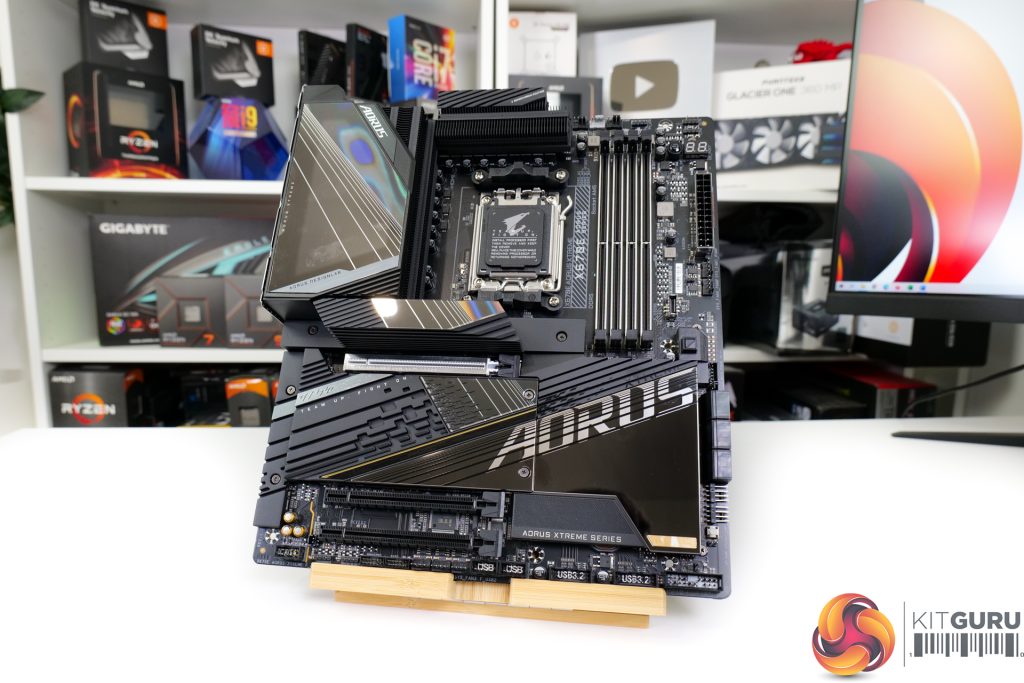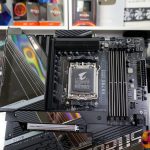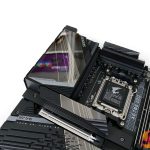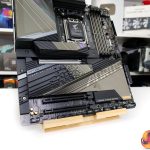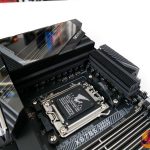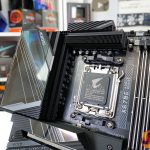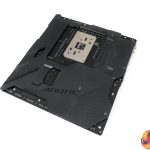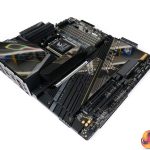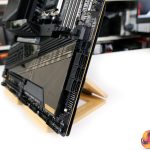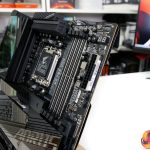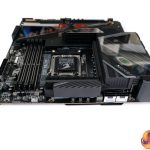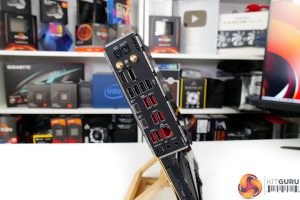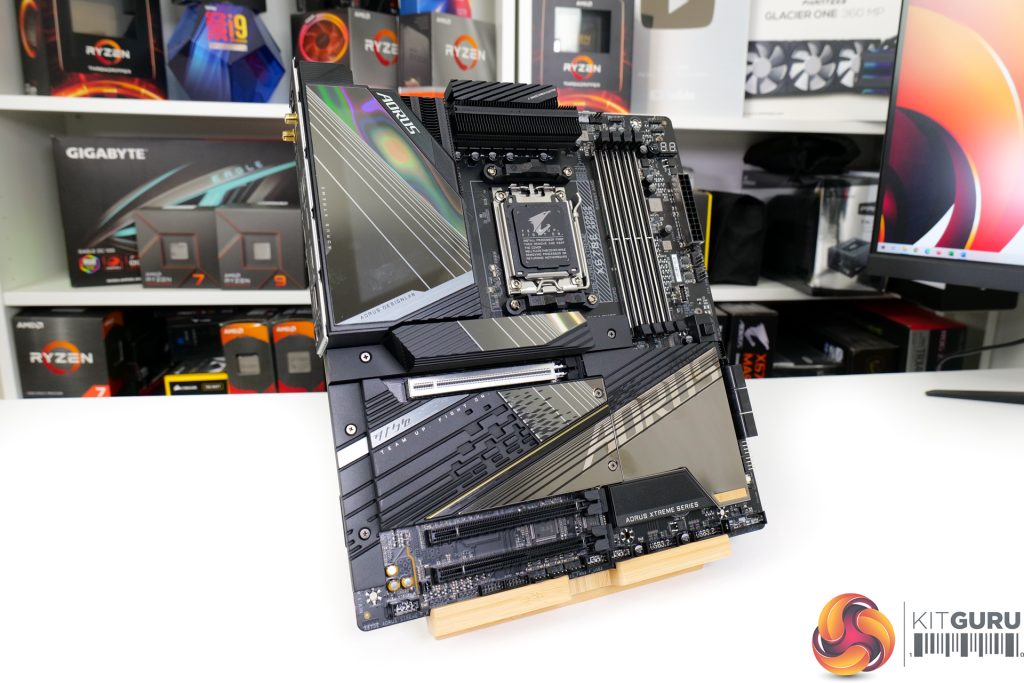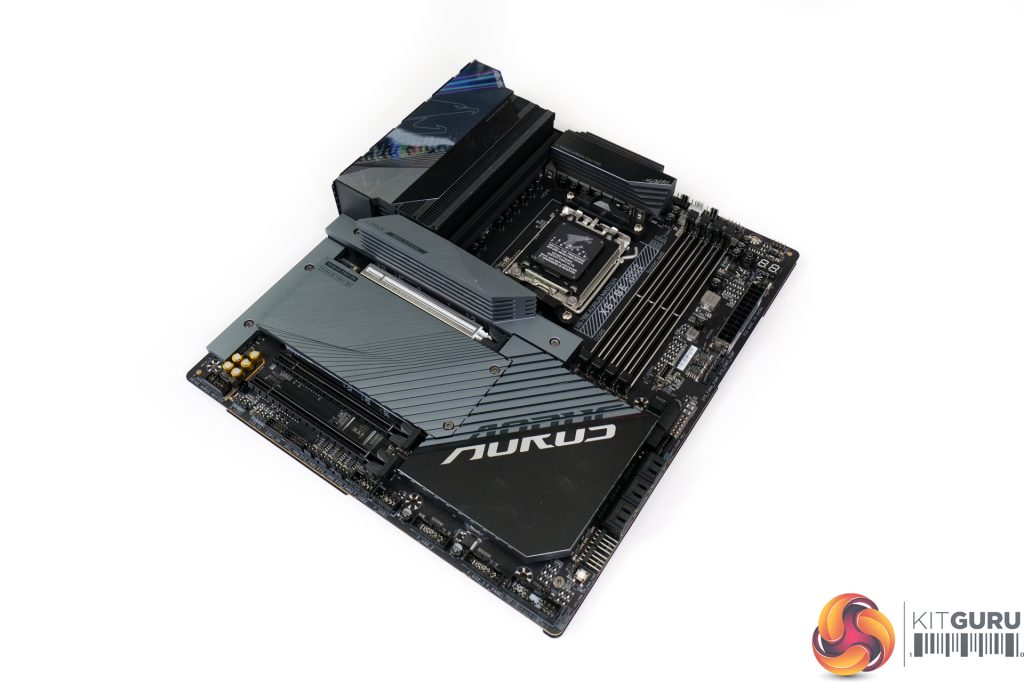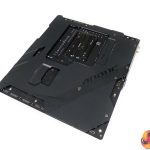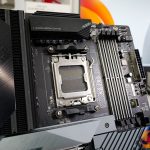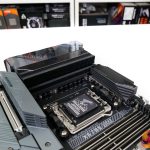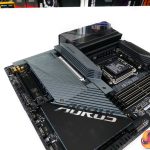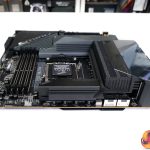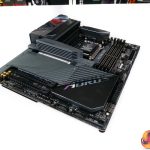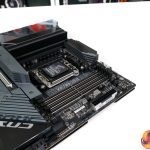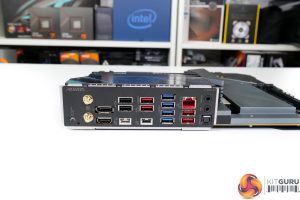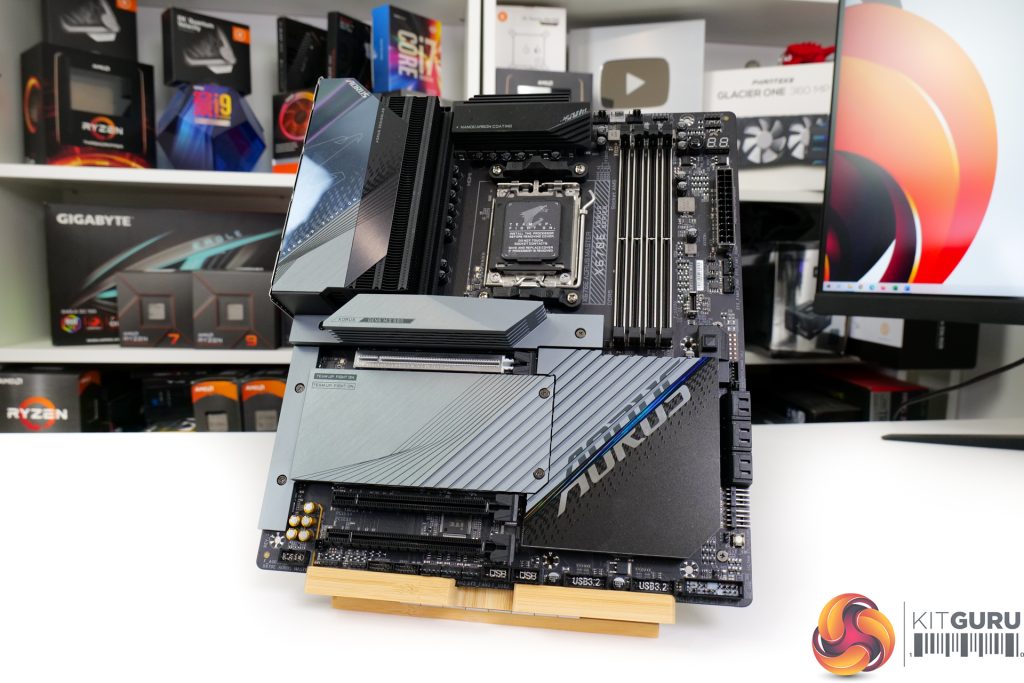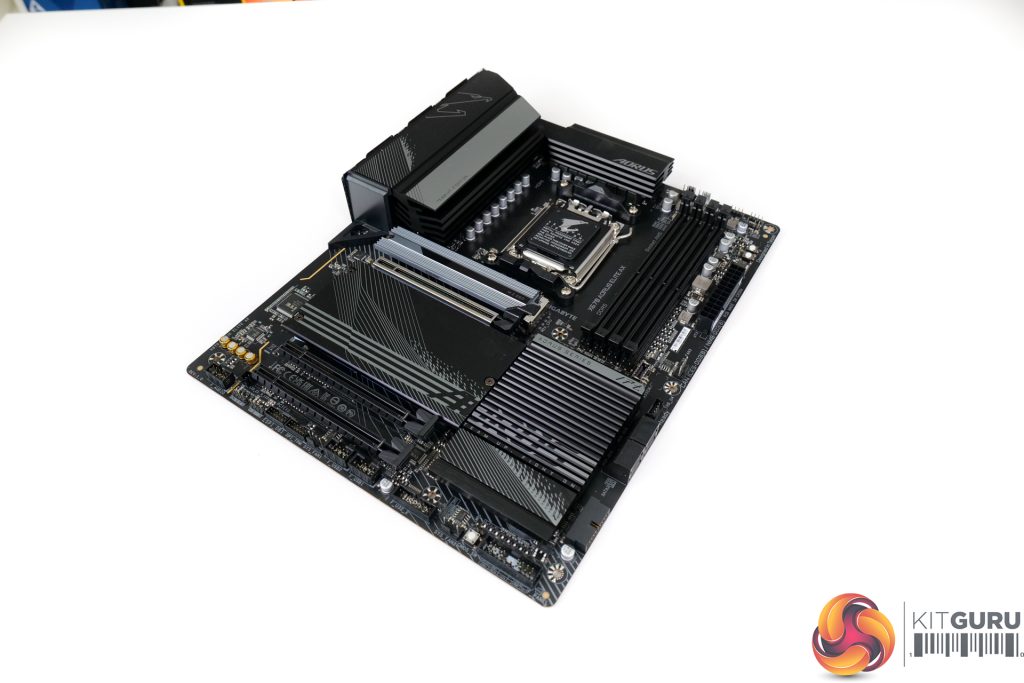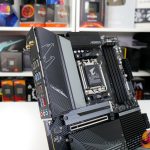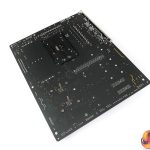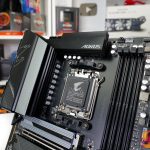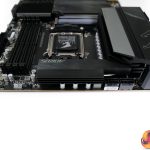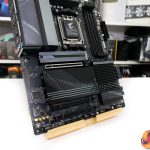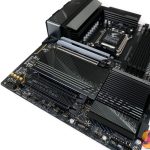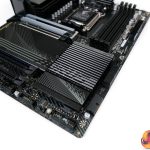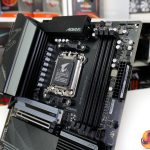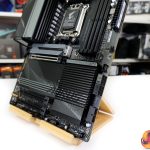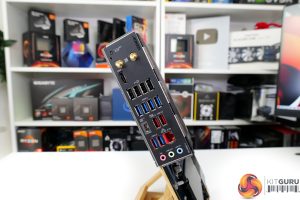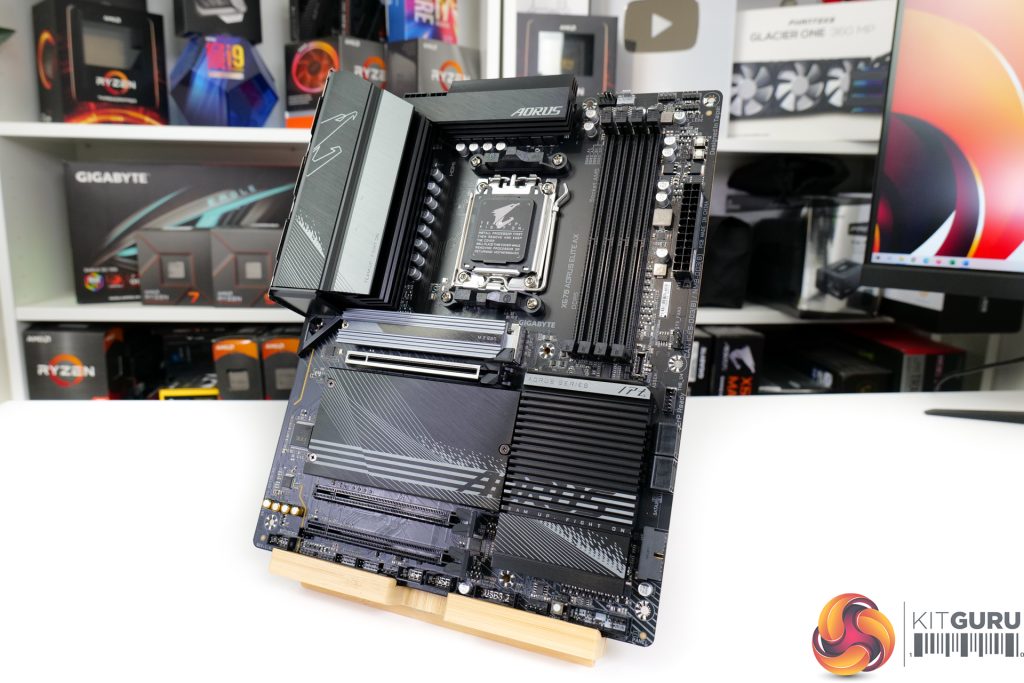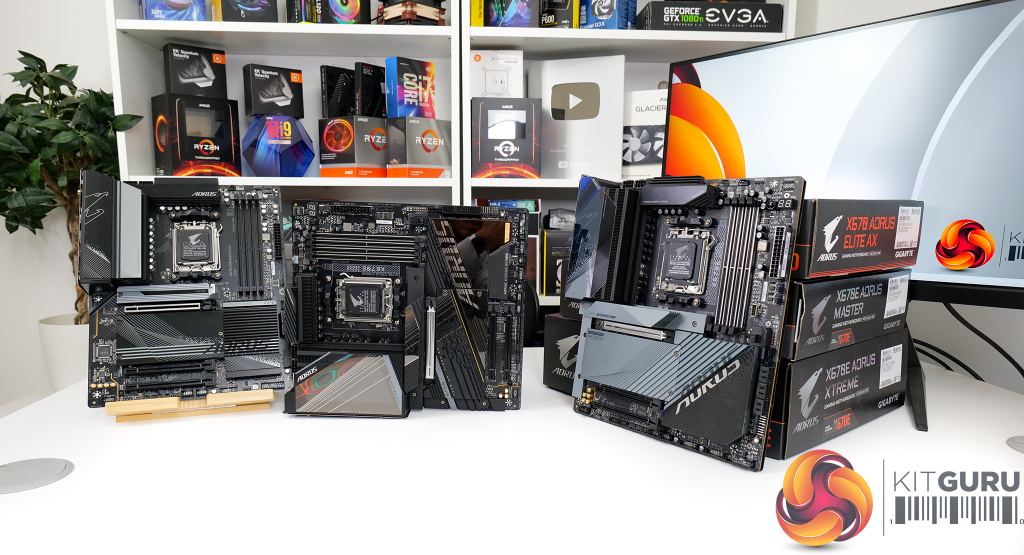AMD’s new AM5 platform has launched with the new Ryzen 7000 series processors. Alongside useful upgrades such as PCIe Gen 5 and DDR5 support, the new platform ushers in a new cohort of motherboards with extensive feature sets.
In this video, we will be taking an initial overview look at three of Gigabyte’s new Aorus AM5 motherboards. These are: the X670E Aorus Xtreme, the X670E Aorus Master, and the X670 Aorus Elite AX.
Timestamps:
We have already covered the new AMD processors and the AM5 platform in our launch review, so make sure you check that out. This piece will be an initial overview of these motherboards and their feature sets, prior to a full review with testing.
Let’s start out with the flagship X670E Aorus Xtreme.
Appearance-wise, this £780 E-ATX motherboard is an absolute stunner. We get an overall dark black colour scheme with shades of grey and reflective elements on the PCB-covering heatsinks.
Speaking of heatsinks, Gigabyte has gone pretty crazy here.
Large slabs of metal cover the X670E chipset and four PCIe Gen 5 M.2 connectors, and you get an even taller chunky cooling block for the primary PCIe Gen 5 M.2 device.
Plus, a meaty rear-IO cover with Aorus Animated Display sits above the well-designed VRM fin array that features a nanocarbon coating and an 8mm heatpipe
Underneath that MOSFET fin array – that looks to be highly proficient on the face of it – is a Direct 18+2+2 digital VRM design. Gigabyte is using 105A power stages for the VCore VRM, and this power delivery hardware sits on the 8-layer, low-loss copper PCB.
One of the points that I really like is that the metal backplate make contact with the rear MOSFET section via thermal pad. This means that the backplate is more than a structural rigidity enhancement. It also provides some cooling benefit by shifting heat away from the rear area of the PCB.
When looking at the connection slots, we have this thick, armoured PCIe Gen 5 x16 slot that is fed directly from the AMD CPU. This is the slot you’ll want to use for a graphics card, and that really shows as it is very well armoured for modern, uber-heavy boards from the likes of Gigabyte’s Aorus range.
All four of the dual-channel DDR5 DIMM slots also feature metal bracing to enhance their durability.
There are enough onboard connectors on the motherboard to keep even the most niche of users happy. Six SATA ports is ample in today’s market and there’s a front-panel USB Type-C header running at 20Gbps.
RGB and fan headers are plentiful, and they’re distributed across the PCB in an effective manner, including with right-angled orientation. Plus, there are diagnostic LEDs and onboard voltage monitoring points for tinkering users.
And the rear IO connectivity is simply superb! There’s plentiful USB Type-A connectivity including Q-Flash Plus support. Plus, you get dual USB Type-C ports, one of which is 20Gbps.
Networking connectivity is appealing, with 802.11ax WiFi 6E as well as an Aquantia 10Gb Ethernet port.
Video outputs in the form of HDMI and Displayport will likely be reserved for diagnostic or short-term purposes on this type of motherboard, which is fine. And the large Q-Flash Plus and Clear CMOS buttons are two inclusions that anybody who likes messing with their system will love to see.
So, that’s the initial – brief – overview of Gigabyte’s X670E Aorus Xtreme. This is one heck of a motherboard with a clearly overbuilt design and some outstanding specifications.
But what if £780 isn’t with your budget? Let’s look at the Gigabyte X670E Aorus Master.
In terms of appearance, the E-ATX-sized X670E Aorus Master shares many similarities with its Aorus Xtreme sibling. The big difference comes in the price tag of a more tolerable £530 for the Master in the UK.
There’s a little more grey and less black on the heatsink of the Aorus Master, but this does nothing to downgrade them in terms of performance, by the looks of it.
We still get sizable slabs of metal covering the AMD chipset and the quadruple M.2 connectors. The only other key difference is that the rear IO cover is toned down a little, but it still features the eye-catching Aorus branding. And it still sits atop a couple of sizable VRM cooling heatsinks.
Speaking of the VRM, we get a twin 16+2+2 digital design on an 8-layer PCB. The VCore VRM is a twinned approach which means there is a doubled 8+8 setup using ludicrous 105A power stages.
And given the cooling equipped on the front and rear side of this motherboard, they should be fine to deliver ludicrously high current levels if you want to push.
Slots are an area where this motherboard differs to the flagship. Of the four M.2 SSD connectors, two are now PCIe Gen5 and the other two are Gen4. In reality, this will be absolutely fine for most users for quite a long time.
You still get the thick, reinforced PCIe Gen 5 x16 expansion slot for graphics cards as well as the useful PCIe EZ-Latch Plus button for easy card removal.
The DIMM slots, 24-pin connector, and dual 8-pins are all reinforced for durability. Plus, you still get the pair of full-length PCIe expansion slots along the bottom.
Much of the feature-rich connector setup is maintained with the Aorus Master from its flagship sibling. The internal USB-C header is one again 20Gbps, and we still see six right-angled SATA ports.
They are in addition to the equally-impressive serving of 4-pin fan headers and RGB connections distributed around the motherboard. Plus, the onboard diagnostic LEDs, power button, and voltage readings point continue to be offered up.
Rear IO capabilities are an area where the Master differs to the Xtreme, but the differences are unlikely to be a concern for even many enthusiast users.
Ample USB Type-A connectivity is maintained and we still get dual USB Type-C connector, one of which is 20Gbps. Now though, the 10Gbps USB-C port features display output connectivity in DP Alt Mode. And that’s very useful alongside a full-sized HDMI and DisplayPort connector to users want to run a hybrid graphics setup.
Networking is downgraded from the Xtreme but will still impress the vast majority of people. 802.11ax WiFi 6E connectivity is smartly maintained. But now the Ethernet port is via an Intel 2.5Gb NIC. And the large clear CMOS button is dropped in favour of a solitary Q-Flash Plus button.
Gigabyte’s X670E Aorus Master looks to be an absolutely superb motherboard when focussing on our brief overview of its feature-set. It maintains many of the sensible offerings from the Aorus Xtreme but it cuts down minor points in areas that are justifiable for the £250 price reduction.
A high-end VRM setup, seemingly positive heatsinks, and ample connectivity – yep, we’re looking forward to using this board some more!
But what if you want to spend even less money on a motherboard and aren’t bothered by support for a PCIe Gen 5 graphics card? Well, that’s where the £350 Aorus Elite AX comes into play.
Starting out with appearance, we see Gigabyte continuing the blacks and greys of typical Aorus styling. This time, the motherboard is offered up in the standard ATX form factor that is more sensible at this price point than E-ATX.
The heatsinks still focus on the logical areas very well. We get a sizeable slab for the X670 non-E chipset and this sits alongside a rectangular metal plate tasked with cooling three of the motherboard’s four M.2 connectors.
The top M.2 slots get its own cooling strip which is far smaller than the bigger Aorus boards, but should still suffice for handling an SSD.
VRM cooling is handled by two large aluminium structures, one of which overhangs the rear IO to act as a cover. These two individual heatsinks are connected via an 8mm heatpipe as to share thermal load between them.
The difference here is that Gigabyte opts for a bulky structure instead of a fin array. That should be fine for a motherboard of this market positioning, whereby ludicrous overclocking on fancy liquid cooling is an unlikely use case. Plus, the heatsink are actually very large and designed with some surface area enhancements.
The power delivery setup is built around a Twin 16+2+2 digital VRM design. The power stages for the VCore are 70A-rated and this is all put together on the 8-layer copper PCB.
Focusing on the slots, we get four total M.2 connectors once again. But this time, one of those is PCIe Gen 5 x4 and the other three are PCIe Gen 4 x4.
The steel-plated expansion slot for a graphics card is now rated as PCIe Gen 4 x16 and that’s one of the key differences between X670 and X670E chipset motherboards.
Gigabyte also switches up the PCIe EZ-Latch Plus push-button system to an extended tab near the actual slot instead.
Good to see is the USB Type-C internal front panel header on this motherboard. Gigabyte keeps it running at 20Gbps speed too, which is great.
Now we get four SATA 6Gbps ports, but coupled with quad M.2 slots, that’s probably fine.
And we get five 4-pin fan headers spread around the board, as well as five RGB connections. One area that impressed me is Gigabyte’s continued inclusion of onboard power and clear CMOS buttons.
If you like USB ports, you’ll love this rear IO selection. There’s a truck load of Type-A ports in addition to the single 20Gbps Type-C. Video output comes in the form of HDMI, though there’s only the single display output.
And networking connectivity is the ideal mainstream setup – 802.11ax WiFi 6E and 2.5 Gigabit Ethernet. The Q-Flash Plus port is there for useful BIOS upgrade options too.
Gigabyte’s X670 Aorus Elite AX is a sensibly-priced mainstream offering which retains a whole host of healthy features. Quadruple M.2 slots, a beefy VRM setup, and dual 20Gbps USB-C connectivity.
Yep, we can imagine this board will tick quite a few boxes at £350.
So, there we have our brief overview for a trio of Gigabyte's new AM5 motherboards.
Which particular hardware features do you like? And what do you think of these monstrous and well-cooled VRM solutions for handling the hot and heavy Ryzen 7000 processors?
Make sure you check for more in-depth, proper review coverage of AM5 motherboards over the coming weeks and months.
 KitGuru KitGuru.net – Tech News | Hardware News | Hardware Reviews | IOS | Mobile | Gaming | Graphics Cards
KitGuru KitGuru.net – Tech News | Hardware News | Hardware Reviews | IOS | Mobile | Gaming | Graphics Cards


